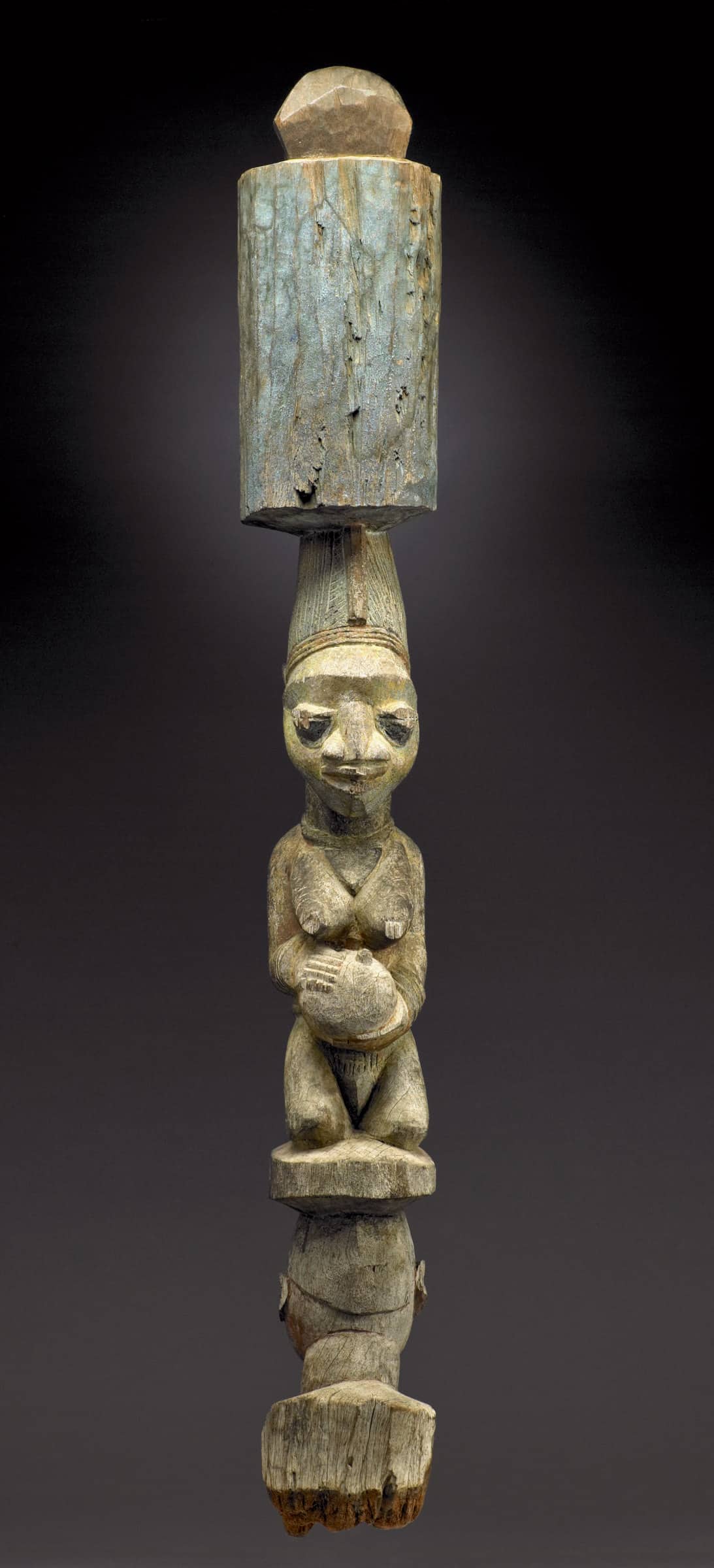In Western art museums, African objects are placed on pristine pedestals, under glass, and as far from their places of origin as possible. Ceramic pots, made for bringing water from a stream and placed in the kitchen, posts that once graced a palace courtyard where kings were enthroned, carved figures in sacred shrines visible only to priests, headrests that supported a nomadic herder’s head as he slept in the bush—these are examples of the lives objects lived before they entered museum collections, and of the spaces in which they were most visible to those who created, used and appreciated them. These contexts are what you cannot see in entirety in a museum display.
This exhibition attempts to restore a sense of the spaces some objects in the museum’s collection inhabited originally. Architecture and the relationship between spaces inhabited by people and the objects in those spaces is a major theme of this exhibition. In many instances, there is an obvious resonance between the object and the building that houses it. A clay pot stacked against the wall of a house may have the shape and color of the house walls, and have been made by the same woman’s hands that smoothed the walls with adobe. An intricately made basket may have been made by the same hand and with the same type of reed that was used to make vibrantly patterned wall coverings in a home. A post in a community meeting house may bear the marks of stress from roof beams, and a glossy patina where hands touched it in passing. In these scenarios, objects embody the people and the characteristics of the spaces around them.
In many exhibitions, we are left to our own imaginings about the course that an object has taken from the time it was made to its placement in a particular environment where it fulfilled its intended purpose. In this exhibition, photographs have been paired with objects to provide a glimpse of their previous existence in African workshops, homes, shrines, churches, palaces, communal spaces, and the natural environment. Most objects are classified as either historical or traditional, meaning they came from a past that may seem irrelevant and inaccessible to Western contemporary culture. However, many of the photographs reveal that the places they came from– homes, churches or shrines– still exist. And, these spaces continue to be changed by the people who inhabit them, who create and live among the objects seen here in the museum. Notably, many of the same types of artworks in the exhibition are occupying these spaces but they have been modified, by a new and different aesthetic. Even, so they persist in recognizable forms.
This exhibition is made possible by the Harn Program Endowment.


